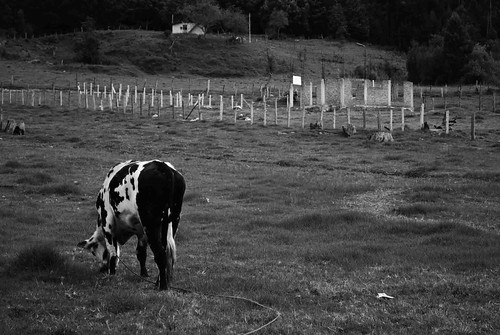rong augmentation of TCR-dependent signaling has been observed so far. In addition to the unaltered Nur77-GFP expression during thymic T cell differentiation, anti-TCR antibody-induced activation of ERK in DP and CD4SP cells from RhoHtg mice was also not increased, indicating that enhancement of TCR signal transduction was not occurring in DP and CD4-SP from the RhoHtg mice. RhoH is required for proper transduction of TCR-mediated signals; however, the level of RhoH expression in wild-type mice might be sufficient and already saturated regarding the activation of Lck and Zap70. This could explain why the RhoH-overexpressing transgenic mice did not exhibit a strong phenotype. We observed a slight but consistent increase in CD2 and CD5 expression in DPs from RhoHtg mice. Because expression levels of CD2 and CD5 are correlated with the strength of TCR signal, this phenotype likely represents increased pre-TCR signaling at the DN3 stage. In fact, we have found that Src family protein including Lck were activated under steady state in DN3 cells from RhoHtg mice, although we did not observe increased TCR-signaling in DP cells. Since the expression level of endogenous RhoH protein in PubMed ID:http://www.ncbi.nlm.nih.gov/pubmed/19740312 DN3 cells is much lower than in DP, the amount of RhoH in DN3 may not be saturated, therefore supplementation with exogenous RhoH expression could enhance pre-TCR signaling. RhoH has been reported to inhibit Rac activity, and overexpression of RhoH into murine hematopoietic progenitor cells via retroviral-mediated gene transfer reduced proliferation and chemotaxis, and increased apoptosis. However, we did not observe reduced proliferation of CD4-SP, nor increased apoptosis of DN3 cells in RhoH-tg mice. Therefore function of RhoH seems to be different in different cell types. We also observed a slight change in TCRab repertoire in RhoH transgenic mice. This could be explained by inadequate activation of Lck due to RhoH PubMed ID:http://www.ncbi.nlm.nih.gov/pubmed/19740492 overexpression. It is known that excessive activation of Lck such as in the constitutively active Lcktg mice suppresses allelic exclusion at the TCR gene locus, resulting in defective T cell Cyanidin 3-O-glucoside chloride biological activity development. Therefore, moderate increases in Lck activation may partially disturb allelic exclusion leading to TCR  repertoire changes. The other possibility is mediated by IL-7 signaling. IL-7 induces the expression of integrin a4b7 and preferential expansion of nave CD4T cells, resulting in diversification of TCR repertoire. Because RhoH deficiency in human revealed relative specific defect in skin homing b7 and a4b7 integrin+ T cells, further studies are needed to elucidate IL-7 dependency on TCR repertoire change in RhoHtg mice. We show for the first time that overexpression of RhoH led to bypass of the pre-TCR checkpoint in Rag2-/- mice. RhoH-overexpression did not induce gene rearrangement of the TCR locus in Rag2-/- mice, as TCR protein was not expressed in DP from the Rag2-/-RhoHtg mice. Bypassing the pre-TCR checkpoint in -selection-deficient DN cells can be achieved 9 / 13 RhoH Can Bypass the Pre-TCR Checkpoint by three independent mechanisms. The first mechanism is associated with DNA strand breaks. DNA damaging agents such as ionizing irradiation-induced p53-dependent generation of DP in SCID mice and Rag2 deficient mice. It is thought that DNA damage induces p53-dependent DNA repair pathways that then somehow induce DP generation. The second mechanism is the inhibition of apoptosis in DN3 cells. The inhibition of apoptosis either by overexpression of
repertoire changes. The other possibility is mediated by IL-7 signaling. IL-7 induces the expression of integrin a4b7 and preferential expansion of nave CD4T cells, resulting in diversification of TCR repertoire. Because RhoH deficiency in human revealed relative specific defect in skin homing b7 and a4b7 integrin+ T cells, further studies are needed to elucidate IL-7 dependency on TCR repertoire change in RhoHtg mice. We show for the first time that overexpression of RhoH led to bypass of the pre-TCR checkpoint in Rag2-/- mice. RhoH-overexpression did not induce gene rearrangement of the TCR locus in Rag2-/- mice, as TCR protein was not expressed in DP from the Rag2-/-RhoHtg mice. Bypassing the pre-TCR checkpoint in -selection-deficient DN cells can be achieved 9 / 13 RhoH Can Bypass the Pre-TCR Checkpoint by three independent mechanisms. The first mechanism is associated with DNA strand breaks. DNA damaging agents such as ionizing irradiation-induced p53-dependent generation of DP in SCID mice and Rag2 deficient mice. It is thought that DNA damage induces p53-dependent DNA repair pathways that then somehow induce DP generation. The second mechanism is the inhibition of apoptosis in DN3 cells. The inhibition of apoptosis either by overexpression of
Posted inUncategorized
